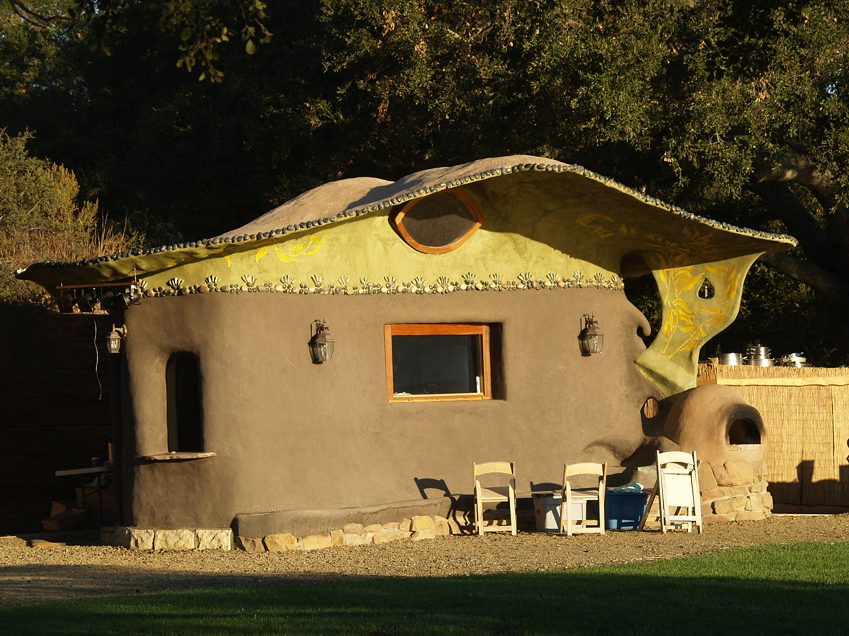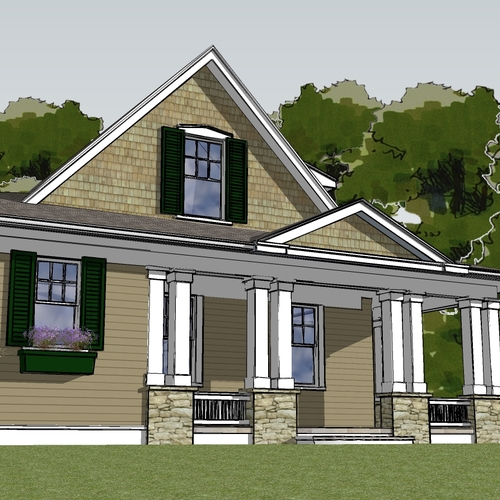In a word, no. But they can if you want them to.
The boom in passive solar design during the 1970s encouraged lots of owner-builders to construct energy-efficient houses. Some excellent books on energy conservation and building theory were published at the time—books such as _The Owner Built Home_, by Ken Kern (1972), and _From the Ground Up_, by John Cole and Charles Wing (1976).
People realized there were alternatives to conventional building techniques that promised greater self-sufficiency and lower costs—not unlike our situation these days.
But some of those houses did look weird, or at least they didn’t look traditional. A generation later, people may remember those early efforts with alarm and wonder if the current green-building boom will mean another crop of ugly houses.
In reality, sustainably built houses cover a huge architectural swath. The principles behind green building can be applied to virtually any style of house, from modernist to traditional. It’s not what it looks like that matters, but how it works.
Even photovoltaic panels can be incorporated directly into the structure so they become virtually invisible. These “building integrated” panels are one of the best examples of how even ultra-green features don’t have to detract from design. Many green features are far less obvious than that, apparent only if you could take the house apart and peer into wall cavities or behind the siding.
One of the strongest cases for sustainable building is its adaptability.
More Info:
See real world examples of Green Building in our Green Homes
section
Weekly Newsletter
Get building science and energy efficiency advice, plus special offers, in your inbox.









6 Comments
Good Looking Passive Solar
Kachadorian's "The Passive Solar House" has an excellent set of design principles for passive solar that allow traditional home designs to employ high-efficiency passive solar heating without any noticeable visual difference from their traditionally designed cousins. The best part: it only increases costs by a few percentage points.
Do Green Houses Have to Look Weird?
Houses ultimately reflect those who occuply them. I"m just sayin'.
IT'S ALL ABOUT PERSPECTIVE!
Go back 50, 150 or 250 years ago and reflect on what we see today and many might think that the McMansions and Cookie Cutter homes we occupy today are weird. We might also think they are a reflection of a wasteful, ignorant and arrogant society that believes they deserve everything. A home is a home period. make of it what your conscious tells you.
IT'S ALL ABOUT PERSPECTIVE!
Sorry, previous post is from James Scott, St. Catharines, Ontario.
your weird is my beautiful
Of course green houses can be "beautiful"; our goal should be to explore how to merge aesthetics with a genuine committment to conserving natural resources. Most people tend to think familiar things are more natural looking so after a generation any sort of design will be much more acceptable. Just keep it green!
Conventional Passive Solar Home Designs
I certainly agree that weird is in the eye of the beholder; however, when I started designing passive solar homes in the 1980's, one of the main instigators for doing so was to make the homes look as "conventional" as possible (which my clients were requesting) due to the backlash from the modern-looking, over-glazed passive solar homes of the 1970's. It used to be when I asked clients would they be interested in a passive solar home, they would say they didn't like contemporary design. While I will design a passive solar home in whatever style the client wants, you can see on our Sun Plans website and in by book The Sun-Inspired House that we have a variety of designs that are not typically called "weird." (We do though have many questions come through customer service asking why we designed xyz weird feature into a home, but I'd guess that 98% of the time the answer is "because the home owner requested it" even after we may have explained possible negative implications for energy, design, structural, etc. reasons. Conventional design is very subjective. Thanks Green Building Advisor to continue to illustrate the variety of possibilities with green homes.
Log in or create an account to post a comment.
Sign up Log in